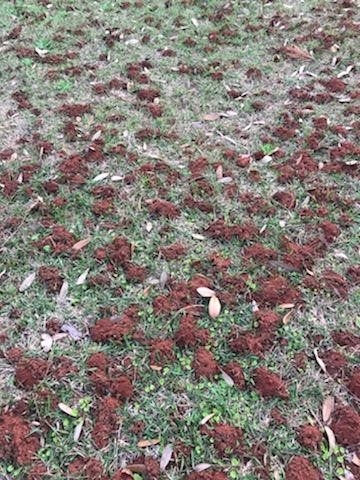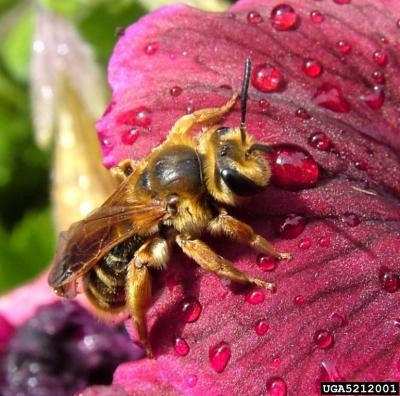
Photo credit: Jim Houldridge
Imagine walking outside one morning to get the newspaper and you notice hundreds of small ant mounds in the front yard. What are the neighbors going to think? Upon further inspection you notice perfectly drilled holes in the middle of those mounds thus making you think that they may not be ant mounds. Now you are perplexed. You go inside and try to explain this to your spouse. A little while later I get a text or phone call asking the following questions. What is causing these mounds? Will this kill my grass? What can I spray?

I immediately think that you are asking about bees or earthworms. So I ask if the holes are about the size of a #2 yellow pencil. Are they clean drilled holes? Well, do not be alarmed. They are just mining, ground or digger bees.

Mining, ground or digger bees nest in burrows in the ground. The burrows tend to be located where there is exposed soil, thin grass, and good drainage. The hole is about ¼ inch in diameter and is sometimes surrounded by a small mound of soil. These bees tend be solitary bees. The female digs her own burrow to pack it with pollen and nectar. She then lay her eggs on that food mass. During the winter, the larva feed on the stored food. As they become adults, the bees overwinter in the burrow site. They will emerge in early spring, mate, and then begin burrow excavation.
Large numbers of males may be seen flying about low to the ground. They are not aggressive and seldom sting. They are just looking to mate. This will usually last for about 2 to 4 weeks. At this point they are just a nuisance to people.
These bees are important pollinators, and they are aerating your yard at no charge. Avoid trying to control them with insecticides. Heavy watering or the elimination of bare-ground areas will discourage these bees and their nesting behavior.
Sources: University of Maryland Extension, Mining Bees-Lawns